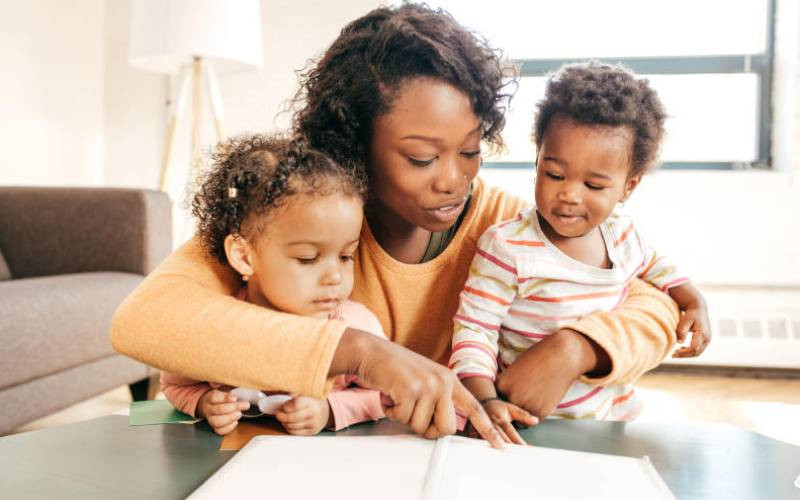
The special investigation team set up to probe a wave of fires that swept across nearly 219 schools in 15 counties mid-last year noted with concern the safety of students in schools in a newly released report. The report, which involved 97 schools in 38 counties, observed that most institutions failed to implement the requirements of the Safety Standards Manual for Schools released in 2008.
As a blueprint for enhancing school safety countrywide, the school safety manual dictates a variety of safety measures to help schools improve the safety of learners.
What one thing never fails to make you feel better??
This includes safety on school grounds, physical infrastructure, health and hygiene, food, transportation, safety against drug and substance abuse, safety of children with special needs, safety against child abuse, disaster risk reduction and school community relations.
Nearly a decade after the launch of the school safety manual, however; accidents, corporal punishment, bulling, sexual offences, violence and terrorism among other threats continue to bedevil leaners in Kenya. Notably, the April 2015 terror attack at the Garissa University College, which left 148 people dead and 79 others seriously injured, remains the worst case of insecurity in schools in Kenya’s history.
SAFETY SPURS EXCELLENCE
Taking preventive measures within and outside the school environment prevents threats that can physically or emotionally harm learners. In effect, building and upgrading education facilities that provide safe, non-violent, inclusive and effective learning environments for all learners is the main focus of the Sustainable Development Goal (SDG) four (4a).
“School safety is an integral and indispensable component of the teaching and learning process. Indeed, no meaningful teaching and learning can take place in an environment that is unsafe and insecure to both learners and staff,” reads the Safety Standards Manual for Schools released after the 2007/08 Post Election Violence that led to destruction of school property and displacement of hundreds children. “It is, therefore, imperative that educational stakeholders foster safe and secure school environments to facilitate increased learner enrolment, retention and completion and hence attainment and quality education.”
According to the safety handbook, schools that are keen on ensuring the safety of their students perform well, have low cases of indiscipline, experience low rates of school dropouts, enjoys active participation of community in school activities and have adequate and well maintained facilities among other benefits.
Key School Safety Measures
First, the school safety manual recommends the setting up of a School Safety Committee that bears the full responsibility of identifying safety needs of the school with a view to taking the necessary action and mobilising resources required by the school to ensure a safe, secure and caring environment for learners, staff and parents. The safety measure on school grounds requires that classrooms, offices, latrines and playing grounds be well-managed and the necessary documents of ownership obtained. In this regard, there has been a number of cases of grabbing school property, notably the dreadful protest at Lang’ata Road Primary School In 2015 that resulted in the hospitalisation of at least ten after police used tear gas to disperse children protesting the grabbing of their school playground.
The manual also urges school to ensure classrooms, dormitories, offices, kitchens, toilets, and other physical structures are clean, well maintained, safe and properly utilised. In particular, dormitories should be clean and properly ventilated. However, most schools that the Clare Omolo-led team visited failed to adhere to this measure.
“Most of the schools visited had filthy dormitories, as evidenced by the presence of bedbugs and foul smell. There was graffiti on some walls whose paint had peeled off, yet schools were expected to regularly paint buildings,” noted the probe report presented to Education CS Fred Matiang’i.
The manual also stipulates that in every school dormitory, the space between the beds should be at least 1.2 metres while the corridor or pathway space should not be less than two metres; all doorways should be at least five feet wide with a door at each end and an additional emergency exit at the middle clearly labelled “Emergency Exit”. Sharing of beds is strictly prohibited.
Nonetheless, the probe team observed that most schools had overcrowded and congested dormitories, with some students sleeping on triple-decker beds. In extreme cases, students shared beds. Additionally, the spacing between beds was not wide enough to allow a quick escape in case of an emergency.
On health matters, a school organisation has a legal and moral responsibility to ensure learners have a safe sanitary and healthful environment. The safety manual encourages the school, sponsors, parents and the community to share responsibility of the health programme.
In teaching health-related issues, teachers are advised to use learner-centred methods through the non-directive processes that allow greater learner participation.
To ensure that children learn the knowledge, attitudes and practices necessary to prevent exposure to the risk of STIs or HIV/AIDS, teachers are encouraged to provide skills-based education on prevention of endemic conditions as well as care of the affected and infected.
ROGUE STAFF EXPOSED
Food safety entails access to safe and wholesome food for learners’ proper physical and intellectual development.
The safety manual prohibits illegal hawking or vending of food to schoolchildren in the school compound or its vicinity is since the safety of such food cannot be guaranteed.
Safety against drug and Substance abuse requires schools to sensitise students about the dangers of drug misuse and abuse and ways of resisting peer pressure to try drugs. Teachers are specifically challenged to help learners to resist peer pressure to use drugs by closely monitoring their activities and advising on the company they should avoid.
According to the probe team report, “It was alleged that in some cases, teachers and support staff were involved in drug peddling and trafficking.”
Where cases of use or missuse of drugs gets detected, the safety manual recommends showing care and concern through counselling to the affected. Teachers, in particular, need to appreciate that the best way to fight drug abuse is to counsel those caught engaging in this vice.
Other safety measures include promoting a learning environment that is safe and caring and caters for the requirements of children with special needs; ensuring that learners are safe from any form of physical, emotional and sexual abuse and neglect by teachers, peers, parents or community members.
Others include ensuring that learners are conversant with the basic road safety rules as pedestrians, or passengers in public service vehicles in order to minimise traffic accidents; and creating mechanisms and procedures that ensure stakeholders are conversant with measures needed to prevent occurrence of disasters and steps required to reduce the impact.
 The Standard Group Plc is a multi-media organization with investments in media platforms spanning newspaper print
operations, television, radio broadcasting, digital and online services. The Standard Group is recognized as a
leading multi-media house in Kenya with a key influence in matters of national and international interest.
The Standard Group Plc is a multi-media organization with investments in media platforms spanning newspaper print
operations, television, radio broadcasting, digital and online services. The Standard Group is recognized as a
leading multi-media house in Kenya with a key influence in matters of national and international interest.










